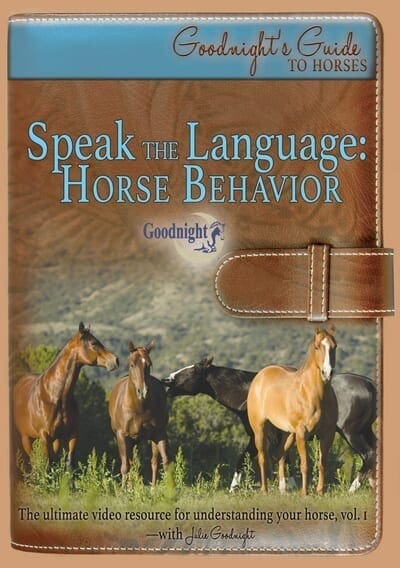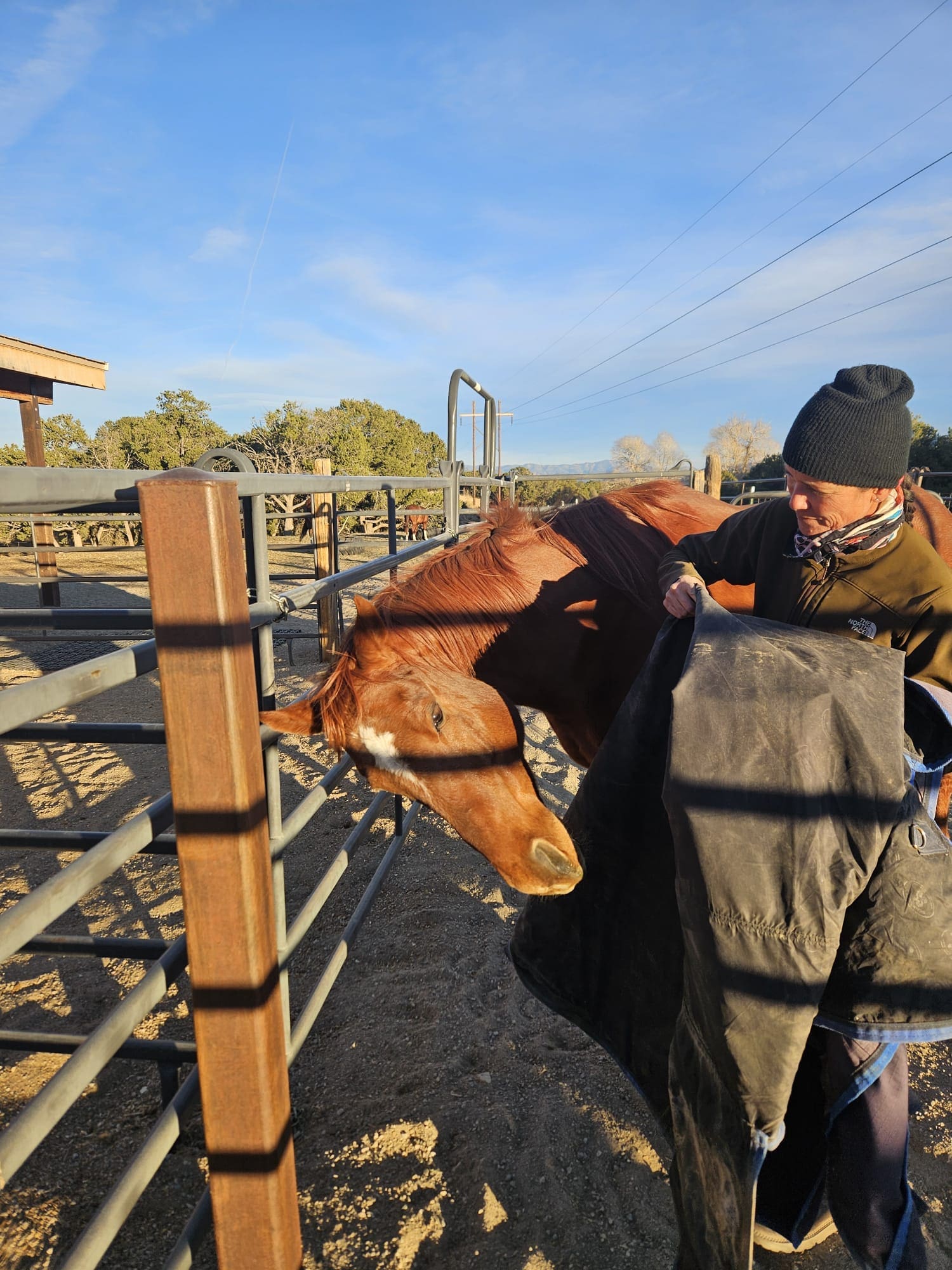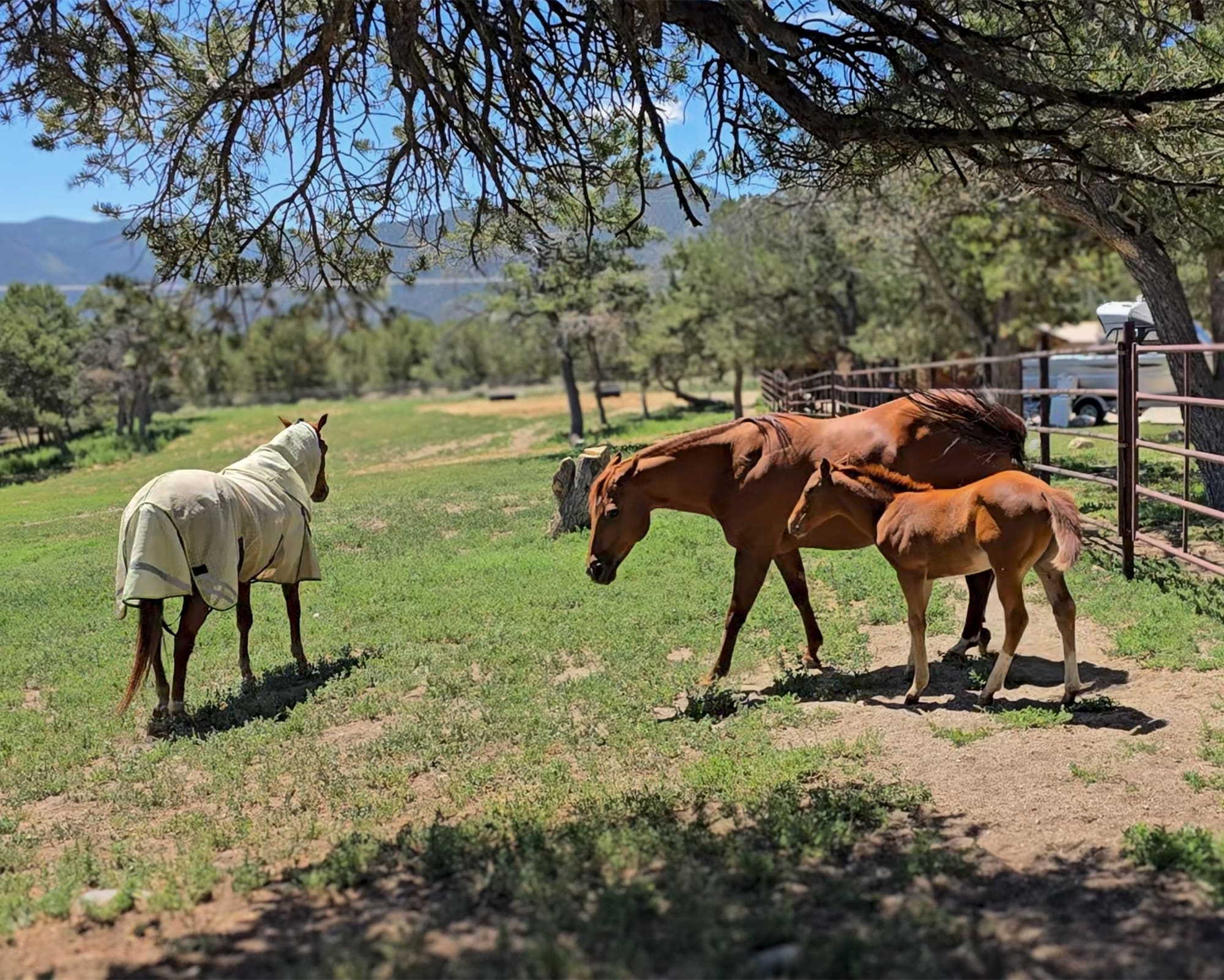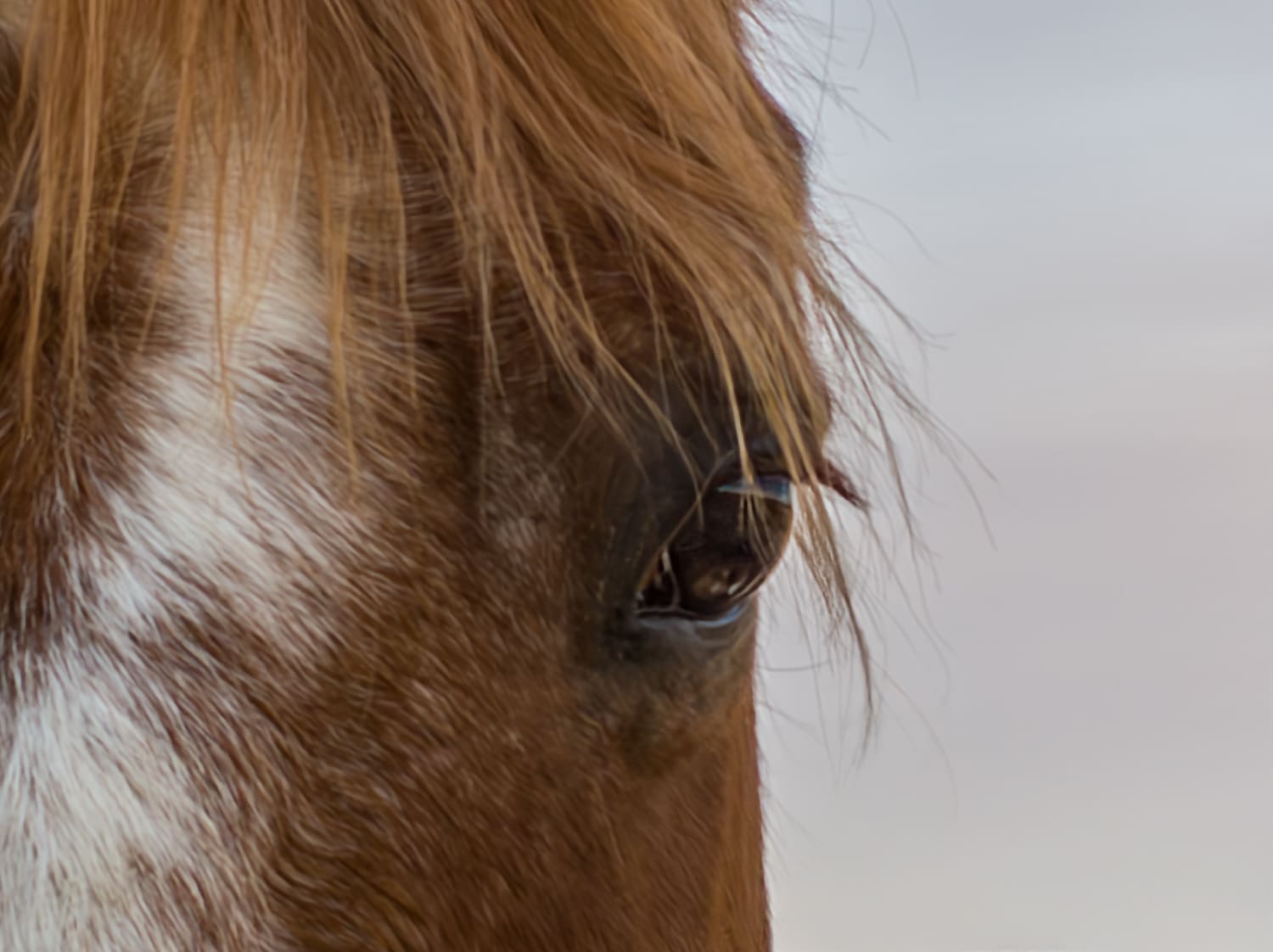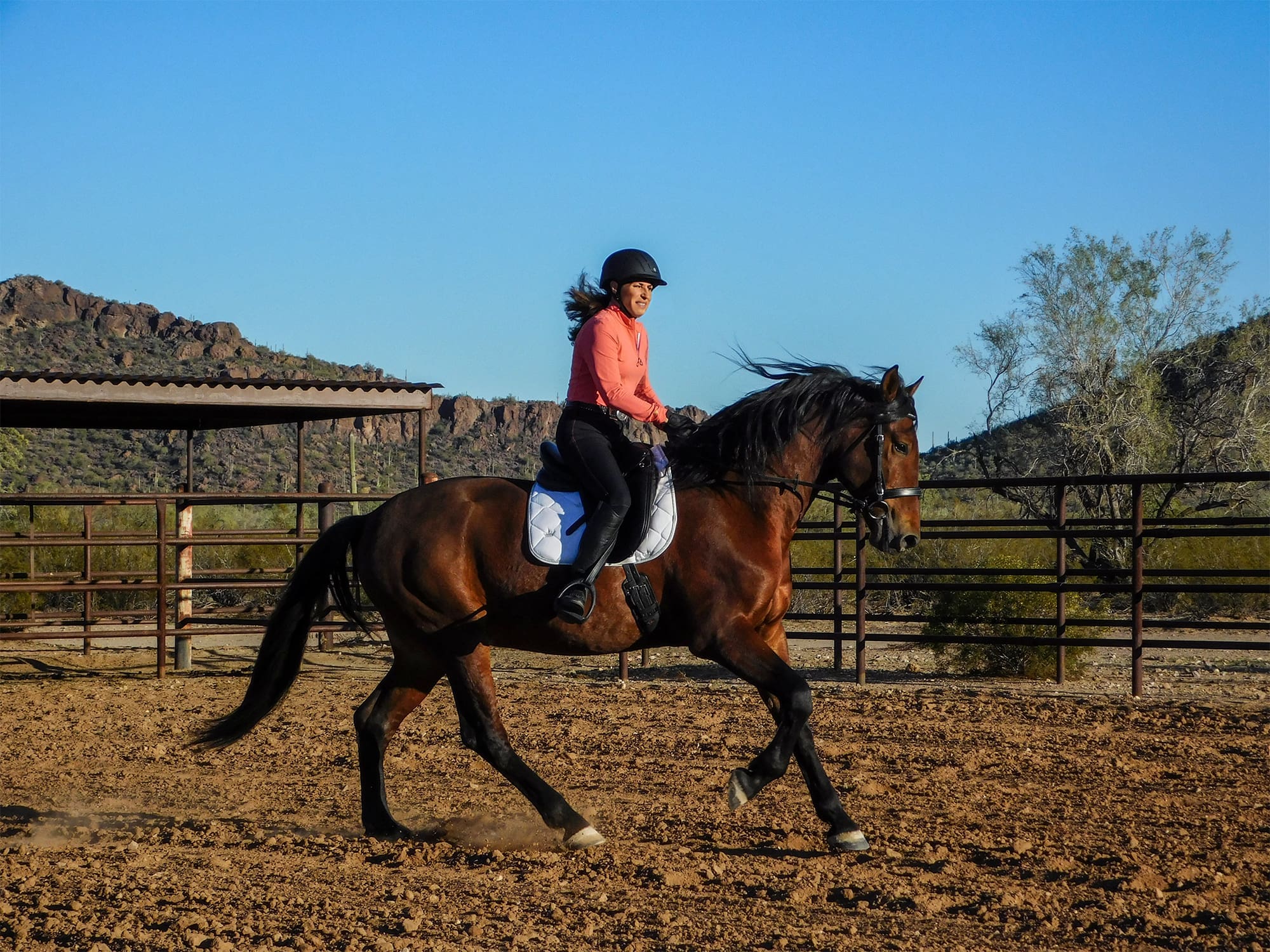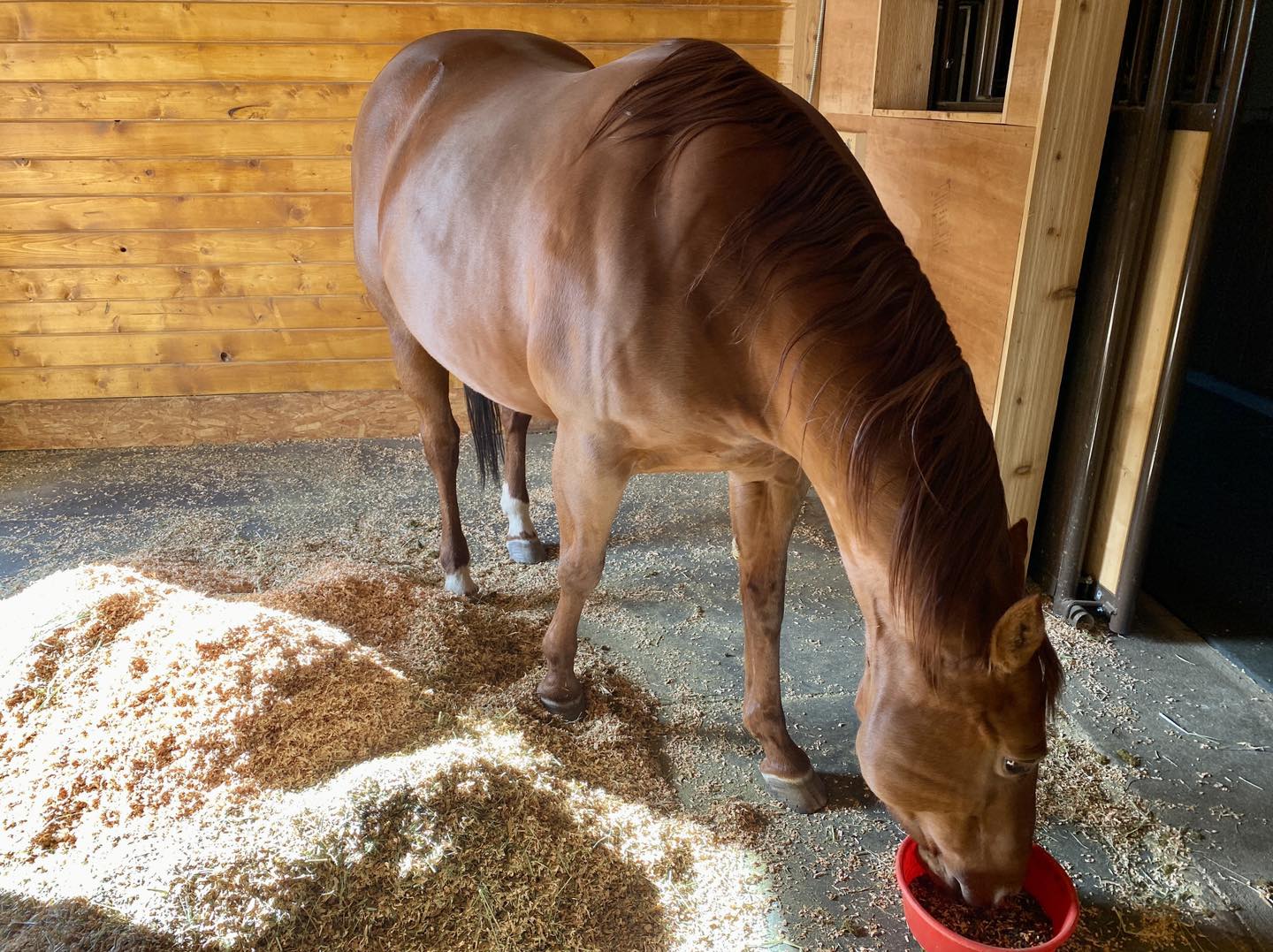
Annie has always worn a blanket in the winter because we ride in a warm indoor arena through the cold months, and I prefer to keep the haircoat short to reduce sweating. You can learn more about that here. This winter, however, I am not riding Annie, so the sweating won’t be a problem. Yes, many people will ride a pregnant mare in the first part of the term, but I have no interest in pushing my sweet little mare. Her primary job right now is growing that baby. (And when you see how big her belly is, it’s very apparent why I don’t want to add to her load!)
We recently installed a camera in Annie’s stall, and we get a kick out of watching her when she comes in at night. She diligently spreads her hay all over the stall like a layer of fine carpet, and then hoovers it up meticulously, strand by strand (consuming every iota of alfalfa first, before moving on to the remaining grass). Once that laborious chore is complete, she tends to lay down to sleep in the wee hours of the morning, between 3 and 6 a.m. I get up quite early, and I love watching her sleep soundly, curled up in her cozy stall as I sip my first cup of coffee.
It was during this new morning routine when I saw that getting up and down from her nap is becoming increasingly awkward for Annie. Before she lays down, she’ll hike up one hind leg, then the other, like she’s shoving that baby into place. Getting up requires a little extra grunt work too. Now, it seems like her blanket has become uncomfortable for her. Although we’ve loosened the straps steadily to keep up with her expanding belly, it appears as though she is reluctant to lay down when the blanket is on.

Grooming Tools
Make grooming time a bonding time with your horse
I don’t want Annie blanketed when she gets closer to her foaling date, but here’s the rub—even with putting on more hair, she is still a naturally thin-coated horse. While I want her to put on a fluffy winter coat, I don’t want her to be cold on the uber-frigid nights either.
With all of these factors tugging me back and forth, I finally decided on a compromise: we’re only blanketing her when the temps are single digits or below. Once we get through January, hopefully the coldest part of the winter will be over, and we can keep her blanket-free for the remainder of her pregnancy. In reality, this is probably bothering me much more than her, but hey, if this turns out to be the biggest dilemma of her pregnancy, I’ll take it!
Meanwhile, as I type this, Rich and I are getting ready to go to Fort Worth to attend the cutting horse sales. Shopping for horses we can’t really afford is one of our favorite pastimes! Fortunately, most of the horses sell way north of our budget, so we often come home with an empty trailer. But the hunt for an amazing horse at an affordable price is an all-consuming and exciting sport! Rich is interested in trained horses, while I am looking at weanlings and yearlings. More than 800 horses bred for cutting will be sold over six days. Some of the horses are of training age, but most are in production sales (bred mares, weanlings, yearlings, even embryos, and the occasional “exact genetic duplicate”).
Buying horses at a sale like this is not a passive sport. We start with combing through the catalogs and building spreadsheets to rate and keep track of the ones that meet our requirements. This is followed by walking miles of barn aisles to visually inspect each horse we are interested in, then watching the trained horses work cattle. Then we have to get to the sale ring in time to bid (on the off-chance we can afford to buy the horse). As you can imagine, all of this keeps us very busy. Even if we don’t buy a horse, we’ll have fun, get to visit with good friends, and see some amazing horses.
With any luck, I’ll come home with a yearling to keep me busy until Annie’s foal (who our farrier has dubbed “InvisiCat” because of the missed preg-check) is old enough for training. If we’re both lucky and Rich also finds a mature horse, our barn will be bustling with activity again. If not, we will still come home with smiles on our faces and some great memories of our time with great friends and good horses. I’ll share the results with you in the next Horse Report. Stay tuned!
